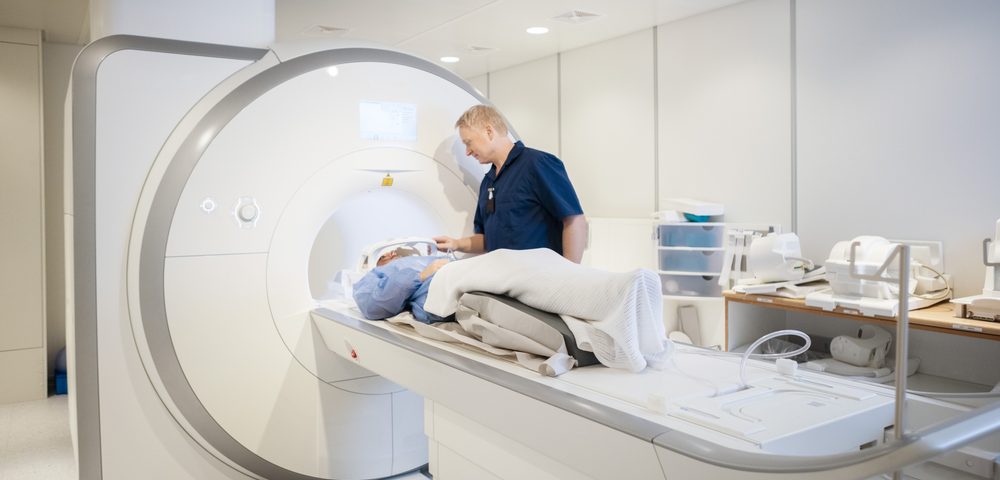PyL, a new imaging agent for positron emission topography (PET) scans, can accurately detect prostate cancer lesions outside the prostate, whether in nearby lymph nodes or in distant locations, clinical trial data show.
The tracer — developed by Progenics — is a second generation fluorine-labeled small molecule that targets the prostate-specific membrane antigen (PSMA) protein, present at high levels in prostate cancer cells. Once bound to cancer cells, the radioactive fluorine serves as a signal for PET scans, making it possible to obtain an image showing the location of these cells.
Results from a Phase 2/3 trial examining PyL’s safety and accuracy were recently presented at the 2019 Society of Nuclear Medicine and Molecular Imaging (SNMMI) Annual Meeting in Anaheim, California.
The oral presentation was titled “Results from the OSPREY trial: A PrOspective Phase 2/3 Multi-Center Study of 18F-DCFPyL PET/CT Imaging in Patients with PRostate Cancer – Examination of Diagnostic AccuracY.”
The completed OSPREY Phase 2/3 trial (NCT02981368) included 385 men either with high-risk prostate cancer who had been referred for radical treatment — surgical removal of the prostate and lymph nodes — and assigned to group A, or those who had radiological evidence of recurrent or metastatic cancer and were eligible for biopsy (group B).
To determine the safety and accuracy of PyL, also known as 18F-DCFPyl, these men underwent PET scans a couple of hours after the imaging agent was released into their bloodstream.
Imaging results were then compared to specimens obtained during surgery for group A and biopsies from group B. Three independent readers examined the PET scans.
In group A, the scans led to very few false positives, but a sizable proportion of lesions identified as negatives were actually false negatives. (False positives indicate the presence of cancer at locations it’s not, and false negatives detect no cancer in locations where it exists.)
In group B, imaging scans were much more accurate, with very few false negatives identified. This high specificity was seen across regions, both in pelvic lymph nodes and in more distant sites.
“[These results] underscore the power of PyL to accurately detect prostate cancer, including high risk and biochemically recurrent disease where more precise imaging can change treatment decisions,” Asha Das, MD, chief medical officer of Progenics, said in a press release.
PyL was well-tolerated, with no serious adverse events related to the agent. Most frequent side effects were altered or unpleasant taste sensations and headache.
“With our PSMA-targeted approach, we have the potential to detect small nodal and distant metastases, even in men with low PSA scores. We believe that PyL could transform how prostate cancer is detected, monitored, and treated,” Das said.
PyL is now being assessed in the open-label CONDOR Phase 3 study (NCT03739684) in about 200 men suspected of prostate cancer recurrence, who have had negative or equivocal findings on conventional imaging.
The trial is currently recruiting at sites across the U.S. and in Quebec. Information on locations and contacts is available here.

